Looking for a new bit for your horse, but don’t know where to start? Horse&Rider helps you break down the process and find the perfect solution
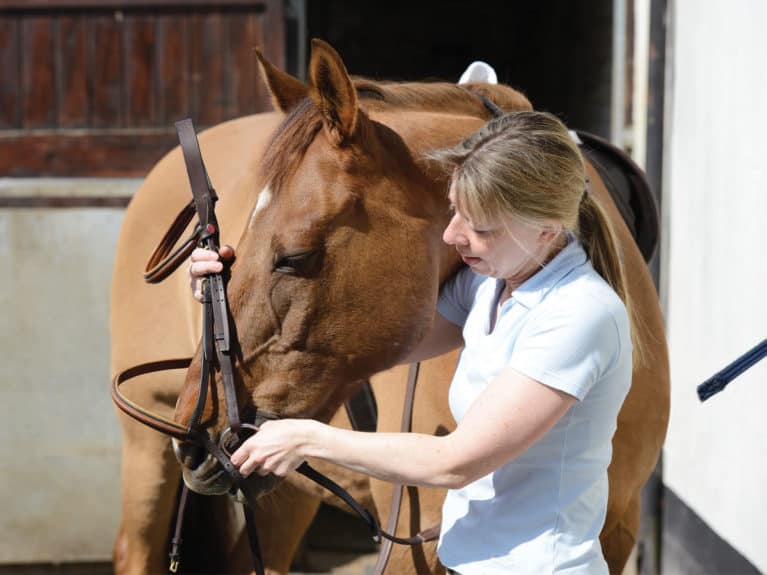
Choosing the right bit for your horse can be a minefield. There are several different classes of bit, all with lots of subcategories, and for each bit there’s usually many different mouthpiece options choose from. So where to start?
To avoid getting bogged down by the multitude of different bits, it’s best to keep it simple and think about your horse’s mouth conformation, how he carries his head and what he’s like to ride. Maybe he has a fleshy tongue, bears down on your hands and is strong to ride, or maybe he has a spacious mouth that’s sensitive and he has a tendency to carry his head too high? This information will help you narrow down the selection to a smaller number of bits and mouthpieces that might be suitable.
Top tip – before you resort to changing your horse’s bit, especially if it’s one he’s been happy with for some time, get his teeth and back checked to make sure he’s not in any discomfort, and book a lesson with your instructor to make sure it’s nothing that can’t be solved by tweaking your riding skills.
Choosing the right bit
The right bit is very personal to both horse and rider, and not every horse with the same problems and mouth conformation will respond well to the same bit. Therefore, it’s best to narrow down a selection of potentials and give each a try until you find one that works well. There are many bit banks and some saddlers that will allow you to try before you buy or hire the bits you’re interested in, so make use of these services when investigating new bit options. It’s advisable to try a new bit for at least two to four weeks before deciding whether or not you like it.
What does his mouth tell you?
To check your horse’s mouth conformation, look in the side of his mouth and see if his tongue is bulging between his teeth. If it is, it’s likely he has a large, fleshy tongue. Then slide your finger into his mouth where the bit would sit and see how much room there is. To get a comparison so you can gauge what’s normal, ask others at your yard if you can look at their horse’s mouth. Alternatively, ask your horse’s dental technician or vet about the shape of his mouth.
Top tip – if you’re thinking about a stronger bit, consider whether simply changing your horse’s noseband could resolve the problem. For example, a grackle could help prevent him crossing his jaw and give you more control.
Different types of bit
Once you’ve looked at your horse’s mouth shape and thought about how he is to ride, it helps to know a bit about how the main types of bit work, so you can pick something that might work for him…
Snaffle
Snaffles tend to be fairly simple bits and are a good starting point, especially with young or green horses. They usually act on the corners of the mouth, tongue and bars of the lower jaw, which has the effect of bringing the head up and in. The action of most snaffles is fairly mild, but can be made stronger by choosing a mouthpiece that has a strong action. They come with a variety of different cheeks, including…
Loose ring, which allows the mouthpiece lots of movement. This can encourage a relaxed jaw, but carries a risk of pinching the corners of the mouth (1)
Eggbutt, which keeps the bit stable in the mouth, restricting up and down movement. It also reduces the chances of pinching the corners of the mouth (2)
D-ring, which is similar to the eggbutt, keeping the bit still and reducing the chances of pinching, but its straighter sides act on the sides of the mouth, helping with steering (3)
Fulmer, which acts in a similar way to the D-ring, but the longer sides provide more help with steering (4)
Hanging cheek, which suspends the bit so it sits off the tongue. It’s useful for horses with sensitive tongues (5)
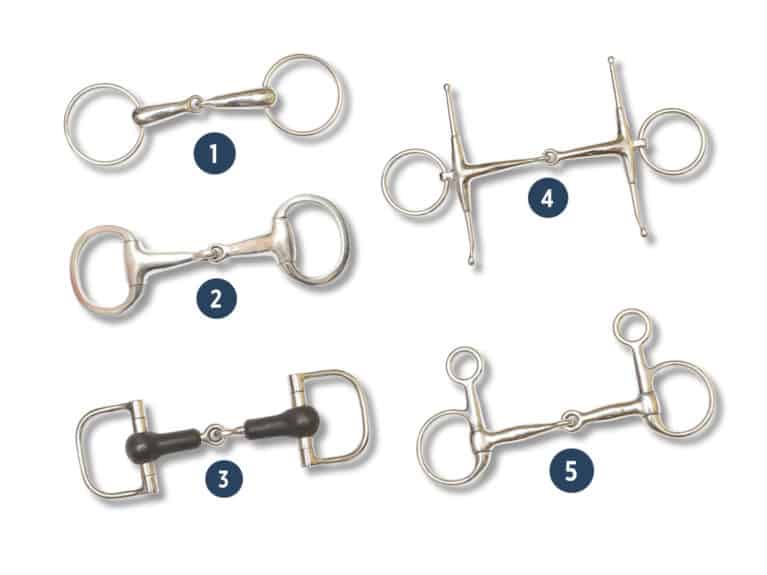
Curb
Curbs (also known as Weymouths) tend to be used as part of a double bridle alongside a bridoon (a small snaffle bit), rather than on their own, and their action can be severe, especially if used in the wrong hands. They act to bring the head down, flex the poll and bring the nose in, and achieve this by applying pressure to the poll, tongue and bars of the mouth.
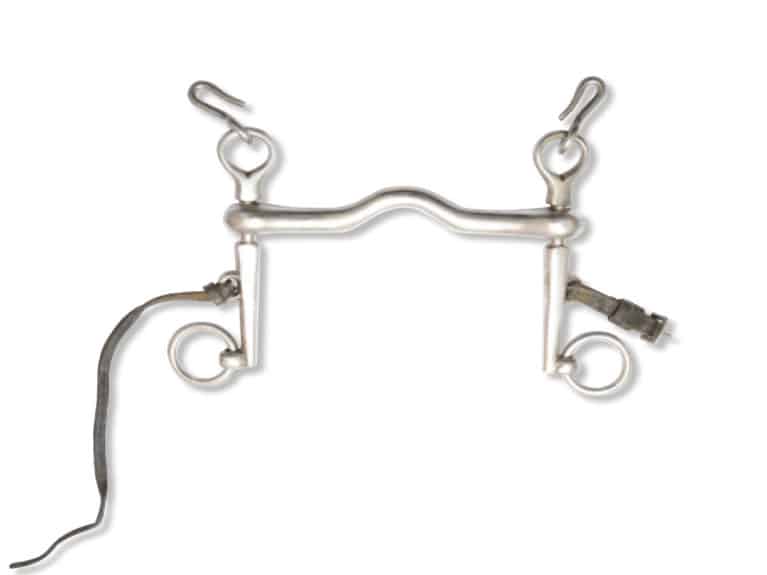
Curb bits have shanks that hang down under the bit and the reins are attached to the ends of the shanks. It’s these that create the poll pressure and the longer the shanks are, the greater the pressure is. They also have a curb chain that sits behind the chin and the tighter the curb chain is fastened, the less pressure is applied to the poll and the earlier the bit comes into action. The ideal is for the curb chain to be fastened so that the chain comes into action when the shanks are at an angle of 45° to the mouth. The mouthpieces of curb bits are usually solid with a port of varying sizes, although some are straight.
Top tip – thick mouthpieces are better suited to horses with fine bars and plenty of room in their mouth, whereas thinner mouthpieces are best for horses with fleshy mouths that don’t have a lot of room, because they take up less room in the mouth.
Pelham
Pelhams are a combination of snaffle and curb bits, so act similarly to a double bridle, but are much simpler. Like a double bridle, the snaffle element acts to lift the head, while the curb part creates flexion at the poll and brings the nose in, but where the bits are combined, the action of the Pelham isn’t quite as effective and refined as a double bridle. Pelhams can be used with two reins – a snaffle and a curb rein – which enables them to be used more like a double bridle, or with roundings that join the two rings together and a single rein.
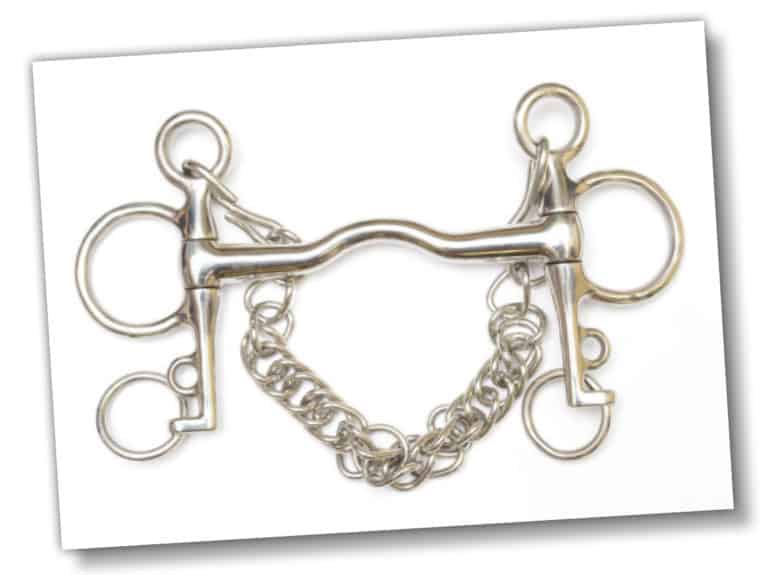
Like a curb bit, the shanks of a Pelham come in different lengths, with shorter shanks creating less poll pressure. They have a curb chain that should be fitted so it comes into action when the shank is at an angle of 45° to the mouth. Pelhams usually have a straight or ported mouthpiece but can be jointed, which is more severe.
Gag
Gags are similar to snaffles, but the cheekpieces run through the rings of the bit and the reins attach directly to the cheekpieces. They act to lift the head and can be severe, particularly in the wrong hands, because while the bit lifts the head, it also places pressure on the poll to bring the head down, so it creates a lot of pressure between the mouth and poll. Like snaffles, they can come with a variety of different mouthpieces to adjust the severity.
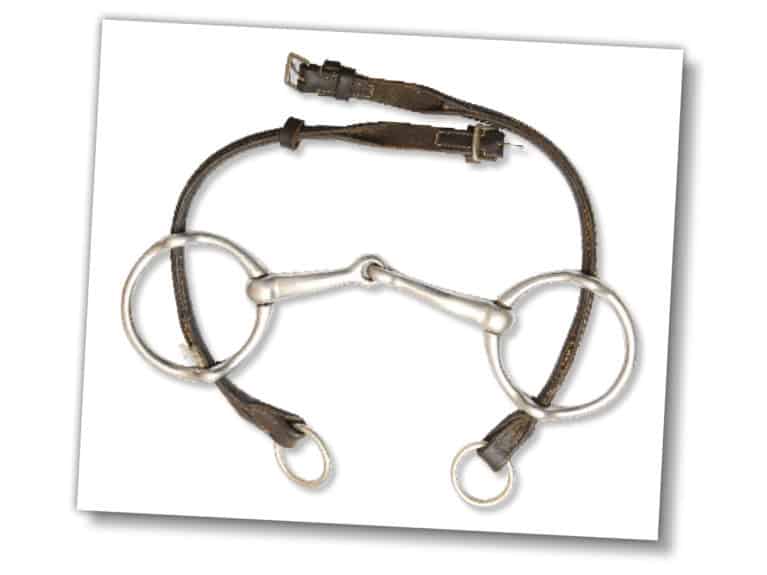
The ideal is to use a gag with two reins – the main rein on the snaffle ring and the second rein on the gag ring. This way you’re mainly using the milder action of the snaffle and only engaging the gag action when you need to.
Leverage
Leverage bits are similar to snaffles but with a ring on the top of the main bit ring to which the cheekpiece attaches and one or two rings on the bottom of the main ring to which the rein attaches. They act to lower the head by placing pressure on the poll and downwards pressure on the lower jaw. The lower down the rein is attached, the greater the poll pressure applied.
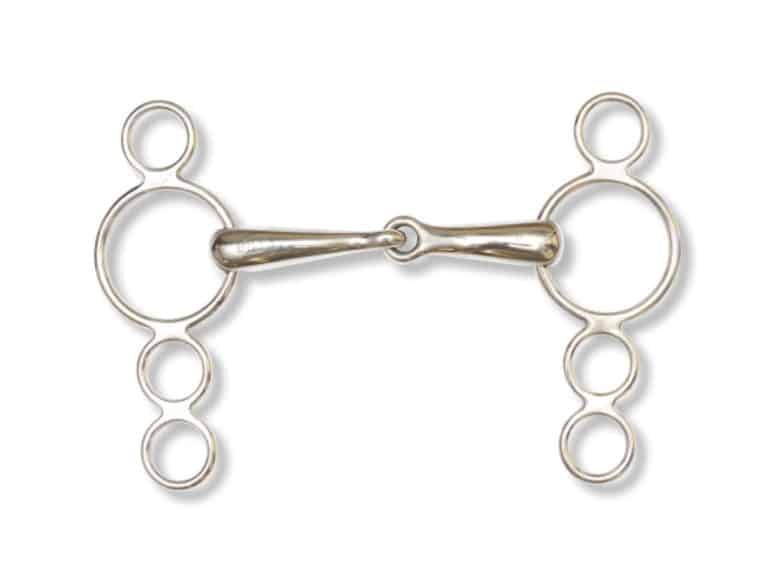
Mouthpiece options
So you’ve chosen a style of bit that might suit your horse, but what mouthpieces might work well?
Straight bar – this is mild, acting mostly on the tongue, and is useful as a first bit

Mullen – like the straight bar, it’s mild and acts mostly on the tongue, but its curved shape allows more tongue room. It’s useful for horses with larger tongues and sensitive mouths

Single joint – this acts on the bars and the tongue by squeezing it, and each side of the bit can move independently, which allows the rider to make clear aids on one side of the mouth and helps with lateral flexion. Many horses go well in a single-jointed bit, but its nutcracker action means the central joint can make contact with the roof of the mouth, especially in horses with a low palate. It can be a good step up from a straight bar or mullen mouth, but many horses prefer a double jointed bit such as a French link or lozenge

French link – this lies flat over the tongue and acts on the bars. It’s thought to be kinder than a single-jointed mouthpiece, because it eliminates the risk of contacting the roof of the mouth. It’s useful for horses with little room in their mouth

Lozenge – similar to the French link, it’s thought to be kinder than a single joint and acts on the bars of the mouth. It’s useful for large, sensitive tongues

Barrel – this mouthpiece provides the benefits of a single joint, where each side of the bit can move independently, but the central barrel provides a wider area of pressure and eliminates the nutcracker action. It acts on the tongue and the bars, and is useful for large tongues and horses with sensitive mouths

Roller – these encourage the horse to play with the bit, promoting relaxation of the jaw. They’re useful for horses who are tense in their mouths, and those who are strong and try to take hold of the bit

Dr Bristol – this is a double-jointed bit that looks much like a French link, but the angle the plate is set at has a severe action on the tongue. It’s useful for strong horses

Waterford – this mouthpiece acts on the tongue and bars, and encourages horses to mouth the bit. When it’s used with a light contact, its action is quite mild, but can be severe if used with a strong contact. It’s useful for strong horses and those who lean on the bit

Ported – this mouthpiece mainly acts on the bars and allows more room for the tongue. The ports come in varying heights, but high ones can make contact with the roof of the mouth, so aren’t recommended. It’s useful for horses with fleshy tongues

Top tip – to check your bit is the right size, there should be enough space to fit one finger between your horse’s lips and the bit ends on both sides.
Testing, testing…
Having thought about your horse’s requirements and explored the bitting options, you should by now have a shortlist of bits to try. It’s advisable to try either changing the mouthpiece or style of bit, not both at the same time, and always start with the mildest option first. If, for example, you try some different mouthpieces but they aren’t having the desired effect, you can move on to a different style of bit with a mild mouthpiece. Then you can test out appropriate mouthpieces with the new style of bit.
When trying a new bit for the first time, it’s advisable to ride in an enclosed area and to have a helper on the ground, in case your horse reacts to the new feeling. You might also find it useful to have your instructor or an experienced friend present to get their opinion on how well your horse is working in the new bit.















